Alternatives to current forms of food production
When we look at how industrial agriculture feeds most of the world and its cheap but environmentally damaging products, dominate markets, it can be hard to be hopeful for the future. It is highly concentrated, with a handful of people, corporations and organizations owning the land food is grown on, while others own entire seed lines and animal breeds. Food production is undemocratic, with most customers having no say in how or where their food is produced and are thus unable to control their impacts. Even imagining alternatives seems impossible: how can you feed billions of people, without emitting high amounts of greenhouse gases, generating huge waste, destroying natural ecosystems and relying on finite resources such as fossil fuels?
It’s important to remember that industrial agriculture is a system designed and enforced by humans. Like all human systems, it can be changed, reformed or done away with. And no matter how difficult this sounds, the alternative is even worse, as the impact on climate and biodiversity will without a doubt make humanity’s future a lot darker.
When looking for alternatives, it’s important to understand that different methods of producing food will be possible at different scales. We might not be able to design a single way of producing food that allows us to get rid of factory farms and intensive monocultures everywhere at once, but a network of interlinked, sustainable models adapted to the local environment is still possible. We need to look both at our history and the present alternatives and use our logic and imagination to create a fair and environmentally sustainable future for food.
Hunter gatherers and gift economies
Foraging is one of the first food production methods – the “gatherer” in “hunter-gatherer”. It provided a diverse diet of fruits, fungi and more. Hallucinogenic plants and mushrooms played a key role in social and religious traditions. It was an incredibly complex science that shaped entire cultures and ways of life. When you consider the existence of supermarkets, online shopping, takeaway apps, it can seem obsolete, yet it is still practiced due to the countless social and economic benefits for both individuals and communities. On a global level, very few people depend on foraging as their primary food source, mostly uncontacted hunter-gatherers. Certain indigenous peoples still rely on hunting wild game and gathering plants and fungi while also engaging in limited agriculture, horticulture or pastoralism.
Many societies where hunting-gathering was or still is the main form of sustenance engage in gift economies. Under such economies, rather than goods and valuables being sold or exchanged, they are given as gifts, usually based on the receiver’s needs or desires and frequently without an explicit agreement for future rewards. This form of economy tends to form cultures based on reciprocity and altruism,
Foraging is, by no means, the “true solution” to the problems surrounding modern food systems. We cannot hope to feed even a fraction of our existing population with sustainable foraging. However, it is an activity with significant mental health benefits for individuals and communities who engage in it. Most importantly, it fuels imagination, grants a new perspective on the living world and reminds us that we are inherently part of it, despite all the barriers between humans and nature. So while the practice itself will not replace industrial farming, the ideas it can teach us will play a key role in this historical endeavor. Likewise, while we cannot expect the incredibly complex industrial supply chains to be replaced by gift economies, the fact that humans have supported each other for at least millennia without requiring constant economic growth or ever raising profits can expand what economic systems we consider possible. Maybe democratic, community-oriented food production that aims to satisfy hunger rather than quarterly profits is not as unachievable as it seems.
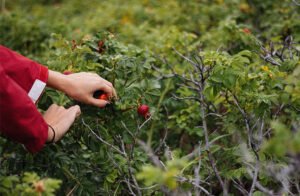
SOURCE: @FONDATION FOR THE BIODIVERSITY
Pasture commons and village greens
Common land is land owned by a person or collectively by several people, over which other persons have certain common rights, such as to allow their livestock to graze upon it, to collect wood, or to cut turf for fuel. The ones who benefit from these common rights are usually called commoners. In the United Kingdom for example, these lands were referred to as commons, and they represented millions of acres in the 17th century, and over 8000 commons still exist to this day in England alone.
Food production was one particularly important role of commons. While individuals held their animals as private property, the land they grazed upon – the pasture commons – was administered collectively. Several different habitats can fulfill this role, from moors in the uplands to salt marshes, sand dunes or cliffs on the coast, and on inland lowlands they may be downland, grasslands, heathlands or wood pastures, depending on the soil and history. These habitats are often of very high nature conservation value, because of their very long continuity of management extending in some cases over many hundreds of years. Humans not only managed them collectively, but also did so while enriching and becoming tied to the local ecosystems. In the past, most pasture commons would have been grazed by mixtures of cattle, sheep and ponies, and often also geese. Related to commons are village greens, common spaces within settlements where people could ponds for watering cattle. The village green also provided, and may still provide, an open-air meeting place for the local people, which may be used for public celebrations such as May Day festivities. They are present throughout history in a variety of countries, from European ones such as the UK, the Netherlands and Poland, all the way to Indonesia, where they are called Alun-Alun, and represent a central part of Javanese village architecture and culture.
The role of commons continues to this day. Much common land is still used for its original purpose. The right to graze domestic stock is by far the most extensive commoners right registered, and its ongoing use contributes significantly to agricultural and rural economies. Rights to graze sheep are registered on 53% of the Welsh and 16% of the English commons. Cattle are registered on 35% of Welsh and 20% of English commons, whilst horses and ponies are registered on 27% of Welsh and 13% of English commons. This ties humans between each other and to their animals and natural surroundings, ensuring that food production is fundamentally linked with the environment and giving strong incentives to minimize damage. It requires joint working to integrate all interests, with formal or informal controls and collaborative understandings, often coupled with strong social traditions and local identity. This provides an interesting alternative to intensive factory farms, where animals are fed with feed brought from far away and kept in unsanitary conditions.
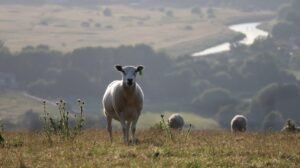
Organic farming
Organic farming is, simply put, an agricultural system that uses fertilizers of organic origin instead of chemical fertilizers. These include various green byproducts and composted biomass such as animal manure, green manure, and bone meal. To make up for lower availability and increase yield, it also places emphasis on techniques such as crop rotation and companion planting. Certified organic agriculture accounts for 70 million hectares (170 million acres) globally, compared to the total of around 5 billion hectares used for agriculture representing approximately 1.6% of total world farmland.
Biological pest control, mixed cropping and the fostering of insect predators are encouraged as holistic, natural alternatives to chemical pesticides. Organic standards are designed to allow the use of naturally occurring substances while prohibiting or strictly limiting synthetic substances. Naturally occurring pesticides such as pyrethrin are permitted, while synthetic fertilizers and pesticides are generally prohibited. Organic farming advocates claim advantages in sustainability, openness, self-sufficiency, autonomy and independence, health, food security, and food safety.
How can you regulate such a restrictive form of agriculture? Organic agricultural methods are internationally regulated and legally enforced by many nations, based on the standards set by the International Federation of Organic Agriculture Movements (IFOAM), an international umbrella organization for organic farming organizations established in 1972 by those practicing these ideals. Organic agriculture can be defined as “an integrated farming system that strives for sustainability, the enhancement of soil fertility and biological diversity while, with rare exceptions, prohibiting synthetic pesticides, antibiotics, synthetic fertilizers, genetically modified organisms, and growth hormones”.
Organic farming is beneficial for biodiversity at the local level and includes the health of soil in its practices. However, because organic farming has lower yields compared to conventional farming, this can put pressure on markets and incentivize landowners in other parts of the world to clear wild territories and grow crops on them to fulfill demand. This can drive destructive practices in biodiversity hotspots, such as the Amazon or Indonesian rain forests. Therefore, local changes in agricultural practices are not enough – widespread, global shifts in economic and political systems are required for the wellbeing of nature.

Permaculture: a holistic view of food and nature
Permaculture is organic farming taken to its logical conclusion. It is an approach to land management and settlement design that imitates the arrangements observed in flourishing natural ecosystems. It includes a set of design principles derived using whole-systems thinking rather than focusing on individual parts. It applies these principles in fields such as regenerative agriculture, town planning, rewilding, and community resilience.
Permaculture has many branches including ecological design, ecological engineering, regenerative design, environmental design, and construction. It also includes integrated water resources management, sustainable architecture, and regenerative and self-maintained habitat and agricultural systems modeled from natural ecosystems. Its wide branching and fuses fact-based science and ecological expertise with a moral ethos for integrating humans and nature.
Permaculture relies not only on knowledge but also on creativity, attempting to take into consideration all materials and energies in flow that affect or are affected by proposed changes. In practical terms it means that before, for example, modifying overland water flow, one fully considers both upstream and downstream effects in the short and long terms. Or, when looking at a “problem”, such as brushy vegetation, one considers how removing or altering it will affect soil and wildlife, and how these interacting forces would evolve over time and space. It is a mix of caution and innovation, and while many critique it as being unscientific, it can help us push the boundaries of what is considered possible.
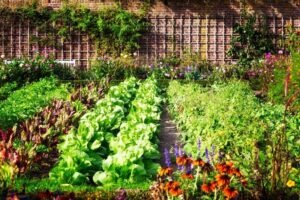
Community-supported agriculture
Community-supported agriculture (CSA model), also known as crop sharing is a system that connects producers and consumers within the food system closer by allowing the consumer to subscribe to the harvest of a certain farm or group of farms. This name is used in the USA, but throughout the world similar concepts exist, such as vegetable box schemes in the UK and Solidarische Landwirtschaft (“solidarity farming”) in Germany and Austria. If the previous agricultural systems are good (or at least better) for the environment, the CSA model can support farmers facing higher costs and greater risks from adopting such models.
In return for subscribing to a harvest, subscribers receive either a weekly or bi-weekly box of produce or other farm goods. This includes in-season fruits, vegetables, and can expand to dried goods, eggs, milk, meat, etc. Typically, farmers try to cultivate a relationship with subscribers by sending weekly letters of what is happening on the farm, inviting them for harvest, or holding an open-farm event. Some CSAs provide for contributions of labor in lieu of a portion of subscription costs. This fosters tighter communities and makes people realize the difficulties of procuring food. One drawback of this is that sometimes it results in farmers charging prices lower than what would ensure their financial stability, a process that is sometimes referred to as “self exploitation”.
This alternative socioeconomic model of agriculture and food distribution allows the producer and consumer to share the risks of farming, placing community and civic responsibility as core values. The model is a subcategory of civic agriculture that has an overarching goal of strengthening a sense of community through local markets. Due to the close connection between producers and consumers, it allows stakeholders such as environmental activists and climate scientists to cooperate more closely and effectively with farmers, on a peer-to-peer basis rather than indirectly. People are more aware of the fertilizers and chemicals used, and can see for themselves how the environment is affected by the farming practices.
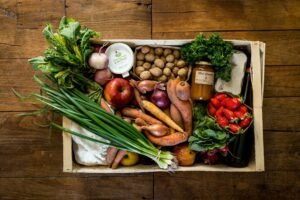
Food cooperatives
If we want alternatives to factory farms and fertilizer-dependent monocultures, we also need to find replacements for big supermarket chains. One possible alternative is represented by food cooperatives. A food cooperative (or food co-op) is a food distribution outlet, organized as a cooperative, rather than a private or public company. Food cooperatives are usually consumer cooperatives, where the decisions regarding the production and distribution of its food are chosen by its members. They typically offer natural foods, and since decisions about how to run a cooperative are not made by outside shareholders but by active participation from consumers, cooperatives often exhibit a higher degree of social responsibility than their corporate analogues.
They have a positive effect on markets by fighting the local monopolies in isolated areas where only a single major supermarket is supported, which results in more competitive pricing and a more circular economy where money develops local initiatives rather than being syphoned away to corporate offices. Food cooperatives allow smaller farmers to join in investments and share risks, reducing potential damage, while also having control over managerial decision-making for their direct benefit. Consumers themselves and the environment benefit because cooperatives often have a focus on local, organic, or otherwise more sustainably sourced products.
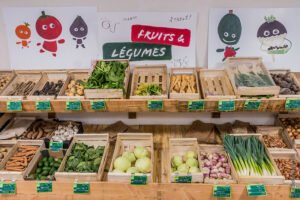
SOURCE: @BREIZHICOOP
Conclusions
These were only some of the agricultural or economic systems that are more community centered, democratic and environmentally friendly. Countless more smaller scale examples exist, from soup kitchens fighting food waste to indigenous horticultural practices. Their importance cannot be overstated: an alternative to the way most people find themselves living is possible. Humans can use their intelligence and imagination to build alternative food production and distribution systems that don’t poison the air we breathe and the water we drink. We can raise crops without destroying soil or driving other species to extinction.
By looking at initiatives which do not have profit as their single goal, we can learn about what is possible beyond economic and financial returns. And while all these methods can have other significant drawbacks, they can be overcome through innovation and can pave the way that is both ecologically sustainable and fair for both farmers and consumers.
DISCOVER WISEFINS